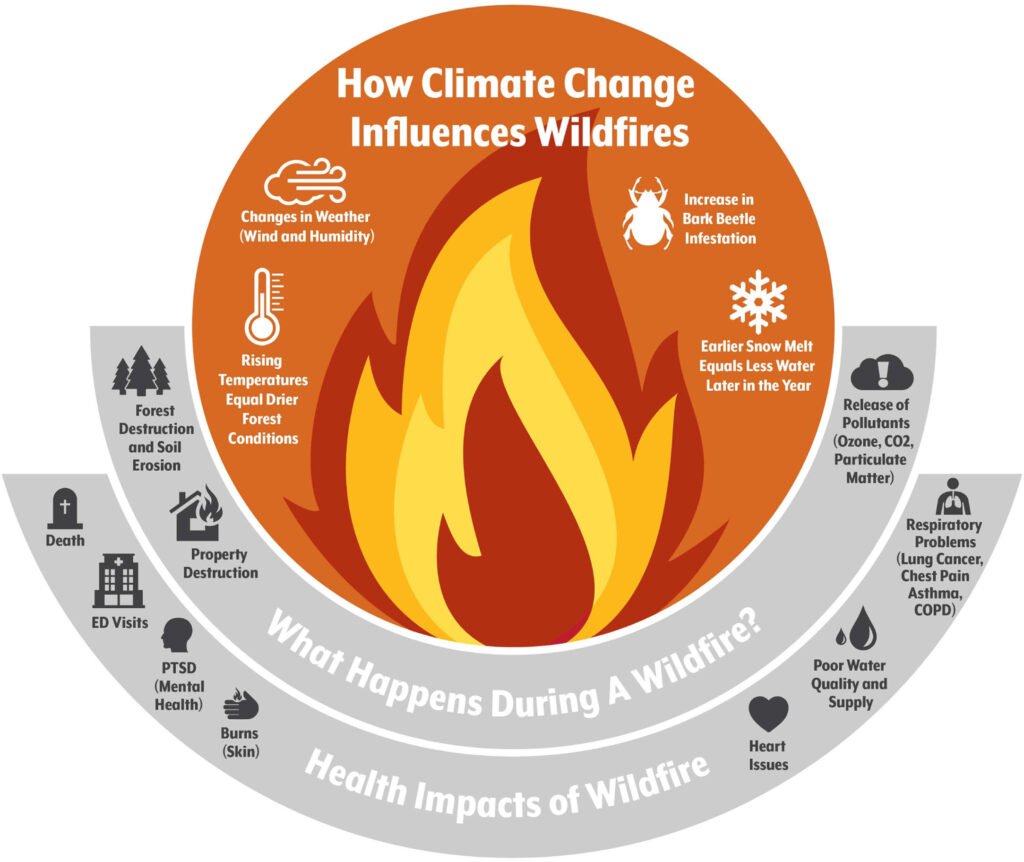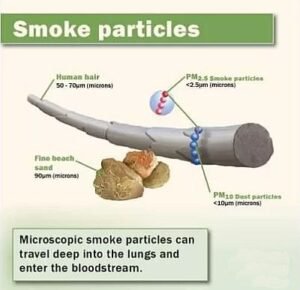Wildfire smoke can worsen asthma and COPD, increase the chances of heart attack and stroke, impair concentration, weaken the immune system, and cause inflammation in various organs including the lungs, kidneys, and liver.

But what about more lasting, even permanent, effects? Can exposure to even short periods of intense wildfire smoke leave permanent scars inside your body?

Although the field of scientific research on this topic is relatively new, it seems that the answer is indeed yes. However, the extent of damage can vary depending on factors such as age, proximity to the fire, amount of smoke exposure, and characteristics of the fire itself.
Scientists have primarily relied on animal studies, short-term research on wildfire smoke, and studies on air pollution and wood-burning kitchen fires to understand the long-lasting effects of wildfire smoke. The majority of this research focuses on measuring exposure to PM2.5, which are particles much smaller than a human hair.
In addition to PM2.5, wildfire smoke contains other toxic chemicals and volatile organic compounds that vary depending on the fuel, the temperature of the burn and even how old the smoke is.
The brain typically has greater protection than other organs because of the blood brain barrier but there are three possible ways that pollutants can reach the brain:
- they can travel through the blood from the lungs to the brain,
- they can enter the brain directly through the olfactory tract,
- they can invade the brain due to inflammation caused by a lung inflammation response

Once there, particulate matter can cause harm to neurons in two ways.
- Firstly, it can directly damage neurons by accumulating harmful and unstable molecules called free radicals.
- Secondly, it can indirectly damage neurons by causing immune cells to release molecules that impair or kill neurons and disrupt the connections between brain cells, affecting communication and memory storage, even if the neurons themselves do not die.
Toxicology follows the principle that the level of exposure determines the harm caused. In the case of wildfire smoke, the density of PM2.5 and other gases is crucial, but the duration and frequency of exposure also play a role.

By adjusting these factors in one’s own life, such as reducing exposure time and frequency, one can reduce the risk of health issues because unfortunately till today, we really don’t have an answer for how much and how long we can be exposed to wildfire smoke before it has long term effects on health.
Reference- National Geographic, ScienceDirect, EPA website, National Library Of Medicine, Journal Nature






